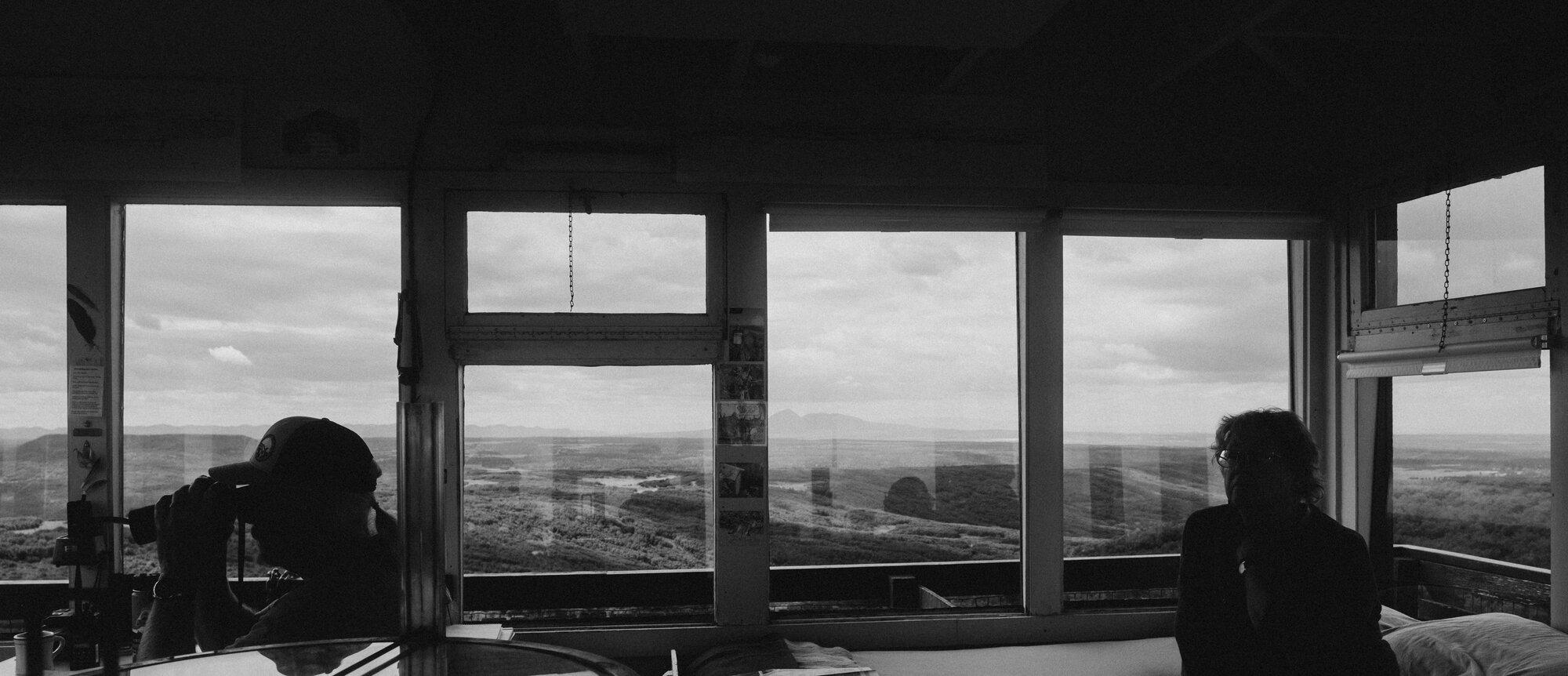You'll never see us: Life atop a Colorado fire lookout

EGNAR, Colo. — Near the western edge of the vast San Juan National Forest, there stands a lookout tower 9,262 feet above sea level. With a view that includes four states — Utah, New Mexico, Arizona and Colorado — no one gets a better lay of the land than Rick Freimuth.
Freimuth and his wife, Linda, have occupied the Benchmark Lookout every summer since 2016. Now retired, the couple can’t help but come back to staff the lookout each year, relishing the solitude it provides them.
“Lookouts are traditionally people who seek solitude . . . looking for smokes might be incidental for those people. For me, it’s not. I love finding smokes and the solitude is just wonderful,” Freimuth commented.
Throughout his day, Freimuth is constantly on the watch for “smokes” — signs of potential wildfires — as far as his eye can see. Listening to the crackle of the radio and monitoring the weather in the sky, Freimuth is a foundational piece in the safety of people surrounding the area.
Freimuth’s work at Benchmark Lookout lasts four months. He communicates with local dispatch about what he sees from the lookout so that they can relay information to fire personnel and staff in the nearby areas. From the changes in weather, wildlife on the ground, and most importantly, fire and smoke, Freimuth is the eye in the sky.
The lookout is in this unique position to be a resource for many different agencies. Benchmark Lookout monitors land managed by the state, the U.S. Forest Service, the Bureau of Land Management, the Bureau of Indian Affairs for the Ute Mountain and Southern Ute, and even private land.
“There’s a huge interagency cooperation among the state, federal and local firefighters here. We’re really proud of that,” Freimuth said.
As technology has developed over the past century, lookouts have become increasingly scarce. Through the early 20th century, roughly 8,000 lookouts were used throughout the U.S. Today, that number has dwindled down to around 300.
With the introduction of aerial technology and infrared cameras, agencies became less reliant on lookouts for monitoring wildfires and the weather.
However, Freimuth believes that humans are still a vital asset to the detection of smokes and wildfire. He says being able to relay real-time information and acting as the point of communication for visitors as well as dispatchers justifies the position of a fire lookout.
“Fire lookouts are an asset to the national forest. Not only are we looking for smoke and trying to keep small fires small, we provide a fair amount of safety for wildland firefighters who are actively out in the forest,” Freimuth explained.

At the fire lookout, the action can be few and far in between. Considering Freimuth is keeping an eye out for wildfires, that is a good thing. And during that downtime, Freimuth makes peace with the world around him: the wildflowers, wildlife, and panoramic scenery. His wife Linda is also in accompaniment.
“People always ask us how we live with each other all alone up here. I find it strange, as I enjoy Rick’s presence and he enjoys mine. And we have other things we can always do on our own,” Linda said.
The couple enjoys long walks on the nearby trails, reading books, working with yarn and taking photographs over the course of the summer.
“We just love coming back up here at the beginning of summer. We never get tired of it.” Freimuth said.
Freimuth, who only sees about 50 people per summer, tries to educate people on how to spot fires and what fire lookouts do. The lookouts, he explained, are a public good, so education is a major part of the work.
Freimuth looks out onto the scenery with a sense of awe and peace every morning and evening. As the clouds change shape in the skies and the sun peaks over the horizons, the light is perfect.
“The light is low and it shows all the things I love. Whether it’s the geology, the landscape, or the wildflowers,” he said. “That’s the best time of the day for me.”
As the sun washes the valleys in its overwhelming light, he takes pleasure in knowing that he and his wife are perhaps the only two people in the world who get to bear witness to the land in this way.

Peter Vo is a multimedia journalist at Rocky Mountain PBS. You can reach him at petervo@rmpbs.org.